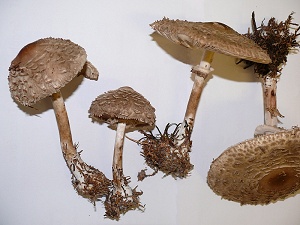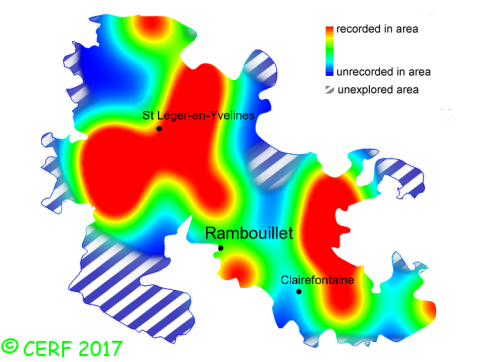| Chlorophyllum rhacodes (Vittad.) Vellinga |
|
|
|
|
|
|
The cap is grey-brown to beige-brown, first egg-shaped then almost flat. The cap surface is covered with large, fibrous, dark-brown upturned scales, giving an overall shaggy appearance, not viscid nor sticky. The stem is smooth, without zebra-like markings, whitish, reddening when scratched, very bulbous, with a fringed membranous ring, double, movable on stem. The flesh is white, turning saffron orange to bright red when exposed to air, then getting brown; its taste is mild; the odour is pleasant; its texture is fibrous. The gills are white, reddening when touched, free, crowded (nb of gills per 90° ~ 50 ). The spore print is white. This species is saprophytic. It grows on the ground, in the woods, wood edges and bushes, more frequently under conifers, but also in parks, gardens, on a rather variable soil. The fruiting period takes place from June to December.
Chemical tests : none. Distinctive features : Cap without umbo, covered with large brownish and shaggy scales; Stem smooth and white, without banded markings, getting brown when bruised, and with a bulbous base; torn and fringed, mobile double ring on stem; flesh saffron-reddening when cut; with shrubberies and often with conifers Chlorophyllum rhacodes is infrequent and widely present in the forest of Rambouillet, and is frequent, more generally speaking . | ||
|
page updated on 14/01/18

